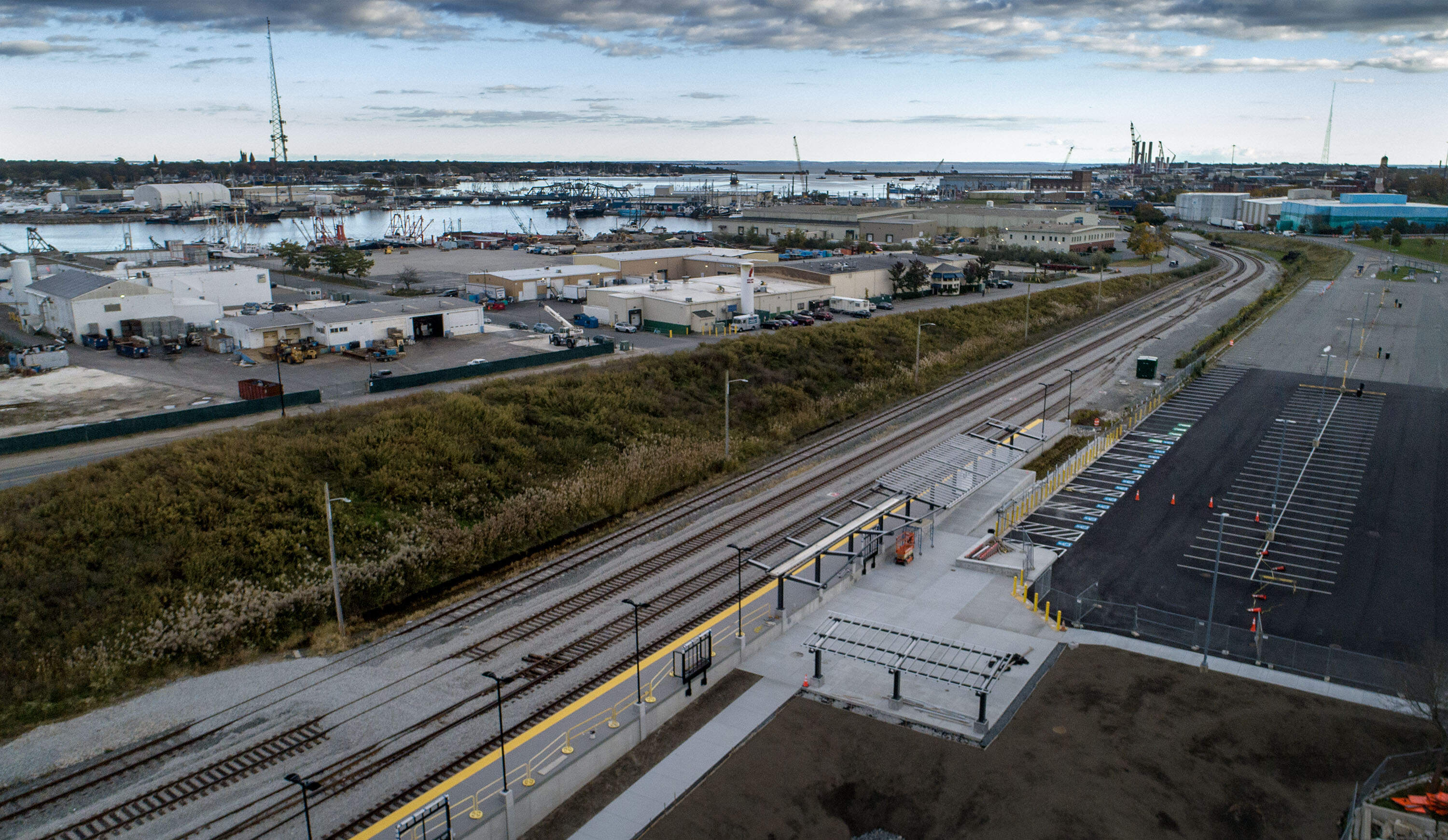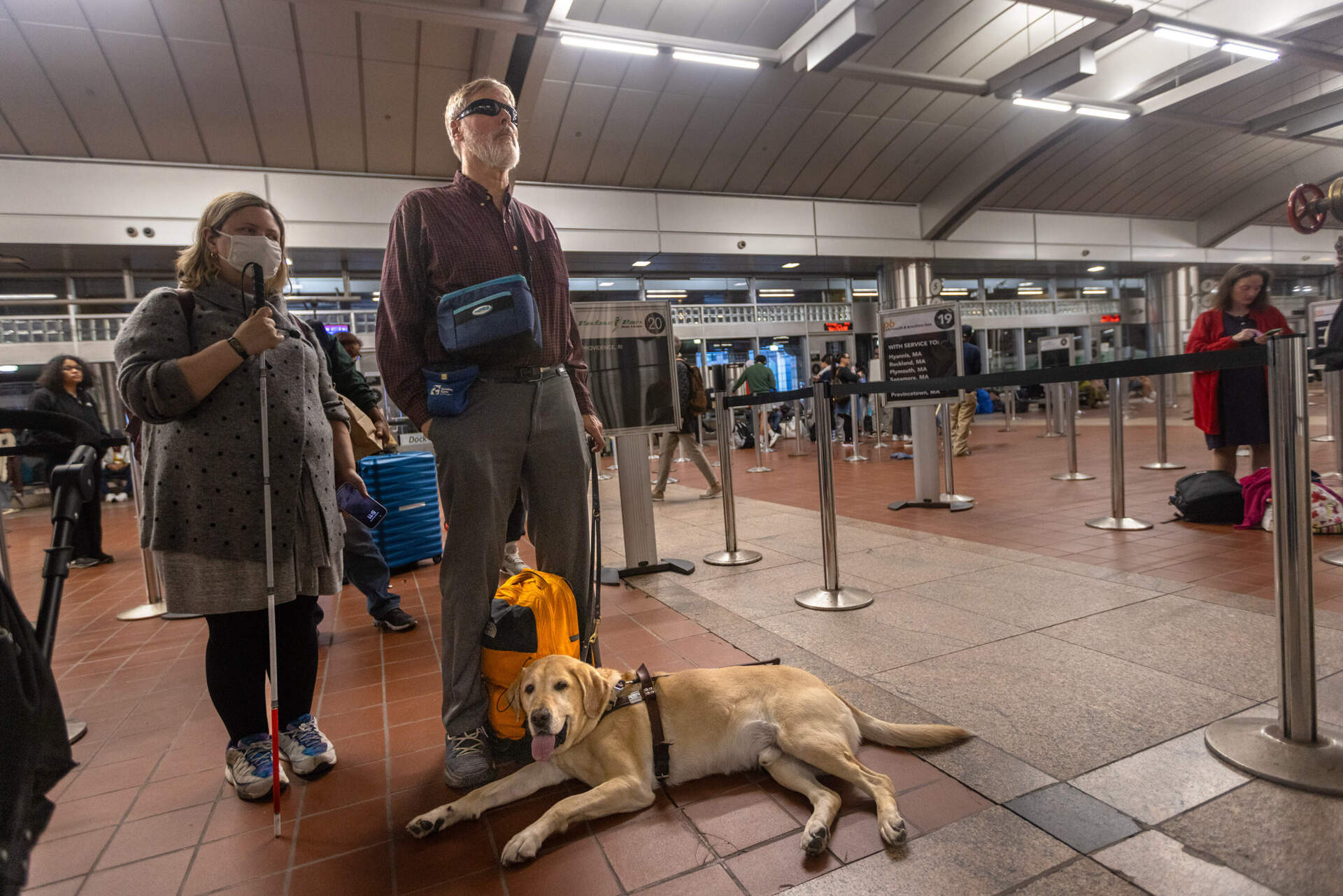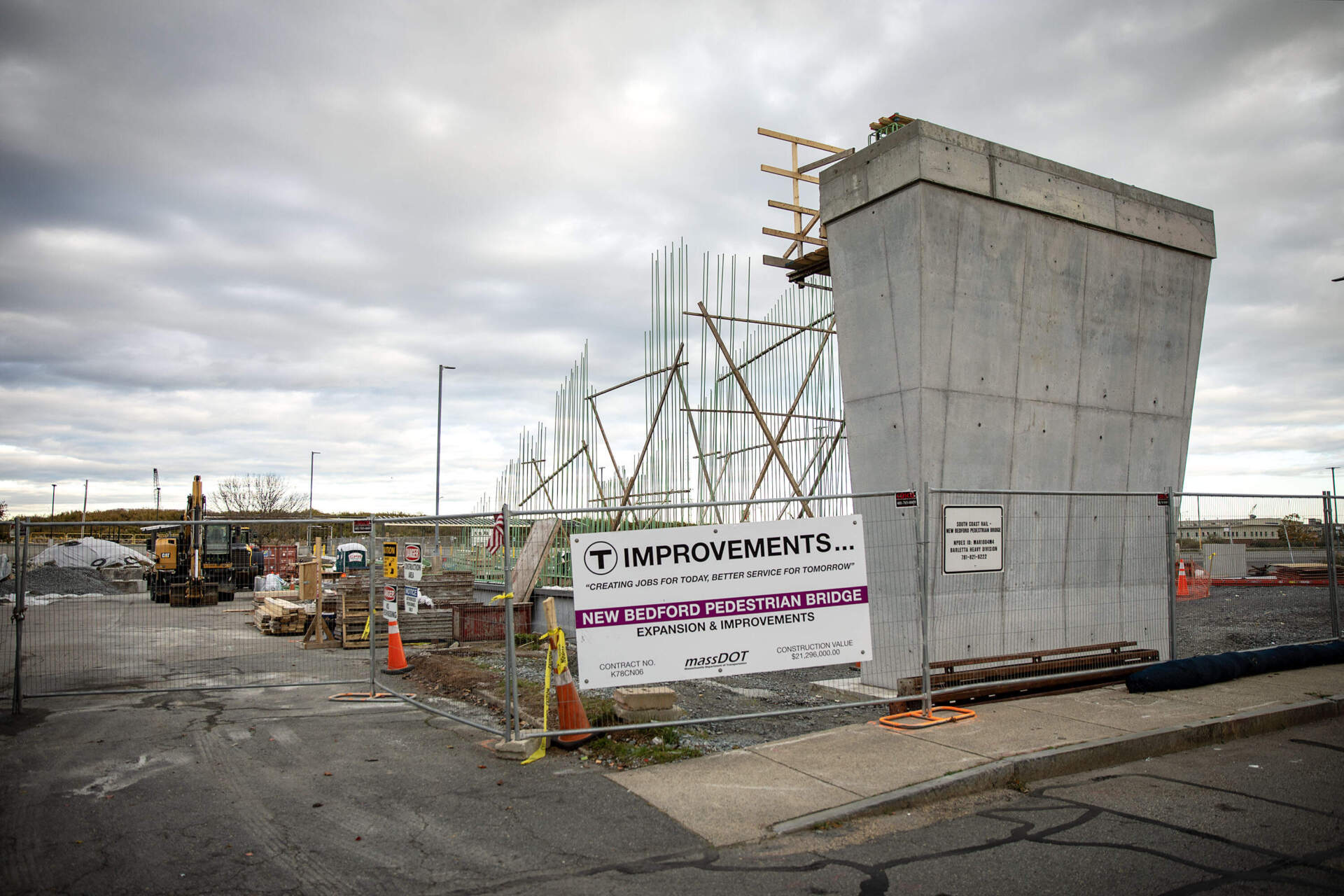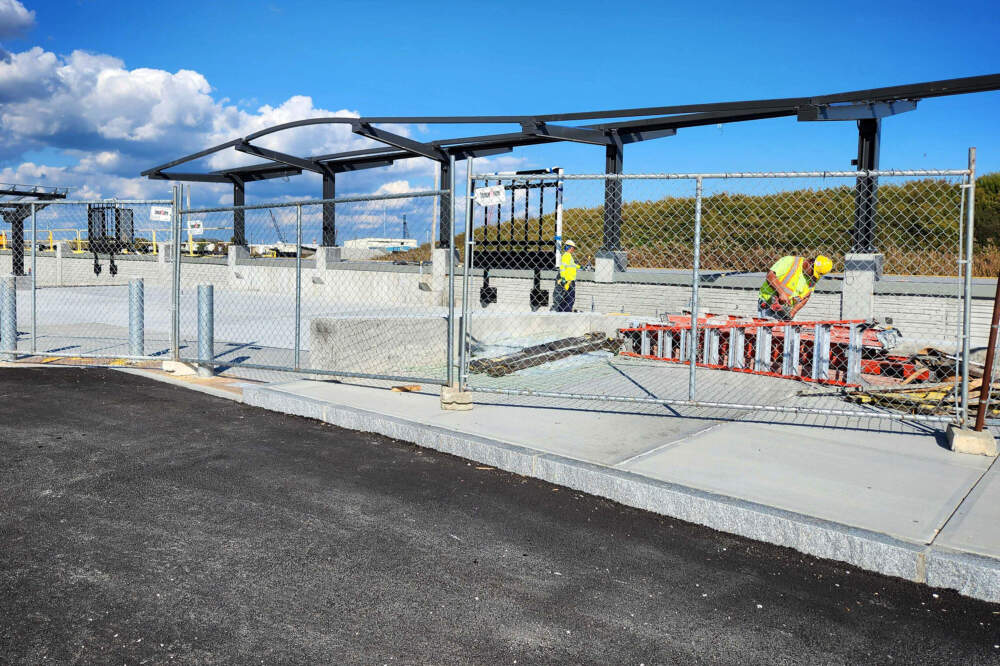Advertisement
As New Bedford area awaits South Coast Rail line, skeptics fret over costs, ridership and slow speeds
Resume
NEW BEDFORD — It’s a project 30 years in the making: a South Coast train line reconnecting New Bedford, Taunton and Fall River to Boston. After countless delays, many wonder when the costly MBTA project will start operating and whether it will be a success.
Today, the only one way to get from New Bedford to Boston on mass transit is by boarding a Peter Pan bus. On a recent morning, Phil Zukas waited at the terminal before 7 a.m. with his service dog, to catch the sole ride available to his Boston office.
If you miss that bus, as one frantic woman towing luggage did moments later, you’re out of luck. There's only one trip to Boston per day.

“We're still pretty behind the times here, and it would be great to have some means of making this easier for everyone,” Zukas said. He’s awaited the long-promised train line for a decade. “I would definitely use it at least four days a week. And maybe on the weekends, if that was an option.”
Fears new rail won't help all residents
Since the 1990s, State Sen. Mark Montigny of New Bedford has advocated to bring commuter rail service from Boston back to the South Coast. He's long believed rail access would motivate commuters to take public transit instead of driving, and that it would support economic development in the region.
“The wishful thinking, and the hope back then, was, ‘If you build it, they will come,’ ” Montigny said. “Companies will come and set up shop because now their employees can go back and forth” to Boston.
But the world has changed, especially in the years since the pandemic. And the seaside city’s economy started evolving long before the trains would come. New Bedford Mayor Jon Mitchell said economic activity has jump-started over the last decade thanks to investments made to revitalize the downtown area and improve the port infrastructure.
To Mitchell, the South Coast Rail is another tool to make New Bedford a more appealing place for people to live, work and visit. He said he “never believed” a train from Boston to New Bedford would “usher in greater prosperity all on its own, but I believe it's a good thing overall. And that's why I've gotten behind it.”
Longtime New Bedford resident and community activist Erik Andrade isn’t sure bringing commuter rail to the city is good for everyone. Rents and home prices have been soaring, he said, in part because anticipation of train service has attracted deep-pocketed developers. He's worried about gentrification pushing out lower income residents.
“If it's for the community, what community are you talking about?” he asked. “Are you talking about the community that pre-existed here? Are you talking about the community that will be attracted to move here?”
Worries about ridership and costs
New Bedford has a population of just over 100,000 people and brings more money into its commercial fishing port than any in the nation. The industry employs some 6,800 people, and more in related jobs. But transit officials estimated the city would have modest rail demand. At a community meeting hosted by the MBTA in early March 2020, South Coast Rail Community Engagement Project Director Jean Fox said projected ridership would be “up to 700 out of New Bedford,” and perhaps less than that at first.
Former Massachusetts Gov. Charlie Baker unveiled the multi-billion-dollar plan to reestablish rail service to the South Coast in 2017, to be completed in two phases. Construction of the New Bedford branch of the South Coast Rail was budgeted at $1.1 billion. The route extends west from the Middleborough/Lakeville commuter rail station toward East Taunton where it splits into two separate branches — one that goes through Freetown and ends in Fall River and another that ends in New Bedford.

Ryan Coholan, the T’s chief operating officer, told MBTA board members in September that the project is “one of the largest in recent Massachusetts history.” It includes the rebuilding of 36 miles of freight train track to accommodate commuter rail trains, the building of more than 30 miles of new track and six new commuter rail stations.
The T projected ridership through 2030 across the Fall River and New Bedford branches would attract 4,400 total daily riders traveling to Boston. But the authority hasn’t updated those projections since the pandemic. Remote work has perhaps given workers on the South Coast fewer reasons to commute. The trip from New Bedford to Boston will take roughly 90 minutes and cost about $13 each way. And it’s unknown how many people in metro Boston might make the reverse commute.
In 2019, the annual operating costs for the project were pegged at $18 to $20 million per year, and given the ridership projections, fare revenue was estimated to be about $9 million. The T knew going into the project that South Coast Rail could cost the system up to $12 million a year.
The T’s plan calls for three trains at morning rush hour and three in the evening. Trains would otherwise run only every few hours or so. The plan does not mention weekend service.
For years, transit experts and critics of the plan have questioned the value of a train line that might not attract enough riders to be financially viable.
Former Transportation Secretary Jim Aloisi said while he supports expanding regional rail, he's concerned the South Coast Rail won’t be an attractive option for commuters.
“What I worry about is building rail systems that end up disappointing people," he said, "which is what I think is likely to happen here."
If the South Coast Rail fails to attract ridership, Aloisi said he fears other major rail projects — like a proposed electrified route from Stoughton to Taunton — could be jeopardized.

The transportation advocacy organization TransitMatters flagged several concerns about the South Coast Rail project when the T first unveiled its plan in 2017 — potential problems its leaders say still loom.
“The route is less direct, and there are capacity issues,” the group’s executive director, Jarred Johnson, said.
The line will run through a section of Dorchester, Braintree and Quincy that relies on a single track, which Johnson said could lead to “bottleneck issues” and delays. He added the T hasn’t shared updated information about how often South Coast Rail trains will run, “but what we have heard has not been encouraging.”

South Coast Rail passenger service was supposed to start by the end of this year, but the T announced another delay in September. Construction is underway, and safety tests will follow.
On a recent visit, contractors clad in neon vests worked on the white concrete platform of the future New Bedford station. Beams that will eventually support a roof stick up like twigs.
Passengers now must wait until next summer to board a train there. That’s if the T meets its new deadline.
This segment aired on November 2, 2023.
